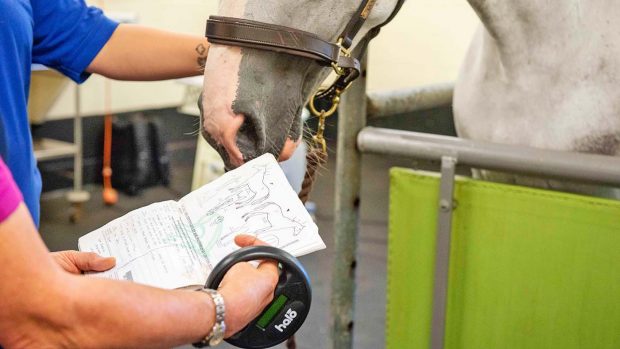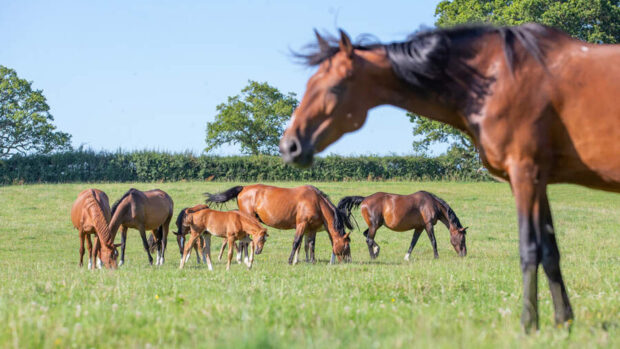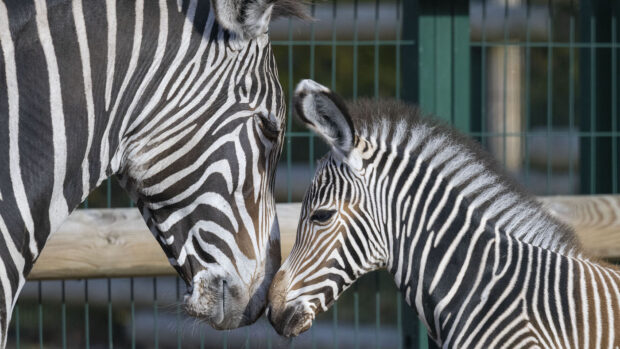Most mares don’t naturally experience heat cycles (oestrus) during the winter and early spring months, although some mares will cycle all year round. In winter, a mare’s reproductive system normally goes into a rest period, known as anoestrus.
After this winter inactivity, the cycle usually begins again in spring, in response to the increase in daylight hours. The mare has a “transitional phase” when the length is variable before she starts to cycle regularly. Once the mare is in the breeding season, her oestrus cycles last about 22 days.
The natural breeding season of the horse is from May until August, which is when highest pregnancy rates are likely to occur. However breeders have been trying to put mares in-foal in the winter and early spring man since the early 19th century, when 1 January was declared the official date of birth for Thoroughbred foals. This means a foal born on 1 February and one born on 1 August are both considered one year old on the following 1 January, despite a six months’ difference in true age.
The Thoroughbred breeding season runs from 15 February until the first week of July. This “man-made” season means that many breeders try to get mares in-foal from the middle of February onwards.
Cycle manipulation
Light can bring the mare to stat their cycle earlier. Putting a mare “under lights” is popular among breeders and means providing extra light at the end of the day. It is also important that the mares are in good condition, brought in and well fed. Hormonal drugs are also prescribed.
Experience has shown that 16 hours of light stimulus (artificial and natural) is adequate to encourage early oestrus. This means providing light from 7am until 11pm. The extra light is best added at the end of the natural daylight period and must be bright enough – a 200watt clear bulb in the middle of a 4m x 4m box is best. A strip light should be 1.30m in length (40 watt). Take care to eliminate shadows, as they can prevent a good response.
Two important points to remember are:
- Extra lighting must be started early enough. Generally, a minimum of eight-10 weeks is needed and mares should be exposed to the lighting system by December. This should mean that they will begin to cycle normally by 15 February. You cannot decide to put a mare under lights and expect her to begin her cycle a week later. Forward planning is essential
- Mares should be in good body condition before they are given extra lighting, which may mean extra feeding. Sometimes, vets may also prescribe hormonal drugs (progesterone), which affect the mare’s cycle. Mares coming to the end of a
two-month artificial light programme may be given 10-15 days’ treatment to give them an extra “boost” to begin their cycle. For it to work properly, it is important that the hormonal drugs are given every day
Health checks
As well as making your mare cycle early, it is important to make sure that her reproductive tract is healthy. This is particularly important if she failed to become pregnant the previous year or lost her foal during pregnancy.
Even if you are putting your mare in-foal for the first time, it is a good idea to ask your vet to perform a thorough gynaecological check – known as the breeding soundness examination. The aims are to detect any cyclical abnormalities, physical defects or signs of inflammation and to assess the likelihood of a mare being able to conceive, carry a foetus through pregnancy and deliver a healthy foal.
Fertility rates
Unlike other domestic animals, horses have never been selected for fertility. The criteria is whether they can gallop fast, jump well or look good. Unfortunately, these horses are not necessarily the most fertile. How mares are managed at stud has an enormous influence on pregnancy rates.
Pregnancy rates at any one heat vary from 35-70%. The overall pregnancy rates at the end of the season vary between 50-90%, with an average of about 70%.
Some mares lose the pregnancy through abortion and the live foal rate (the number of live foals born the following year) is less than the pregnancy rate. The current live foal rate in the UK is around 65%. This means that only two-thirds of mares which are covered will have a live foal the following year.
|
||
 |
||


 Get up to 19 issues FREE
Get up to 19 issues FREE TO SUBSCRIBE
TO SUBSCRIBE 


